
The Six Thinking Hats Retrospective — Agility 11
Some examples of problems where six thinking hats can be used include: A coffee house is getting a growing number of complaints from customers as they are having to wait too long for their coffee - how can they solve this problem?

Reflective Teaching for YOU Six Thinking Hats by Edward de Bono
Examples of using Six Thinking Hats in different scenarios: Pros and Cons of the Six Thinking Hats Methodology Try Boardmix for Free Home>Examples>Six Thinking Hats Templates, Examples & Tips Harry

Six Thinking Hats Technique The Knowledge Compass, Inc Management Consultants
White hat Red hat Black hat Yellow hat Green hat Blue hat White hat The white thinking hat represents the ability to focus on data that you have available to you. This includes analysis, evaluation and testing of information and data. White hat thinking means filling in gaps through acquiring new knowledge and information. Red hat
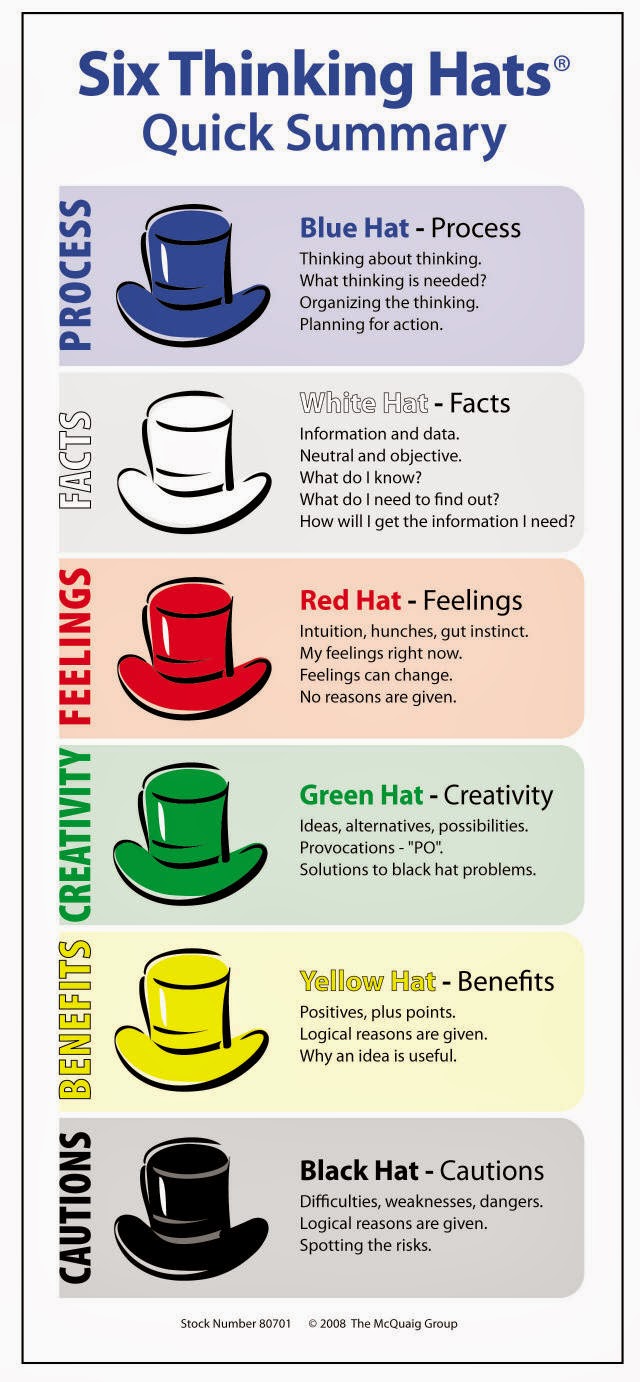
Edward de bono six thinking hats
The six thinking hats are as follows: the blue hat (conductor's hat), the green hat (creative hat), the red hat (hat for the heart), the yellow hat (optimist's hat), the black hat (judge's.

Blog iTHINK SMKCS THINKING HATS
[1] De Bono - who died in 2021 - was also the inventor of "lateral thinking," a method of solving problems indirectly, often in creative and surprising ways. Similarly, Six Thinking Hats is a way to understand and explore different types of thinking. Six Thinking Hats for Decision Making
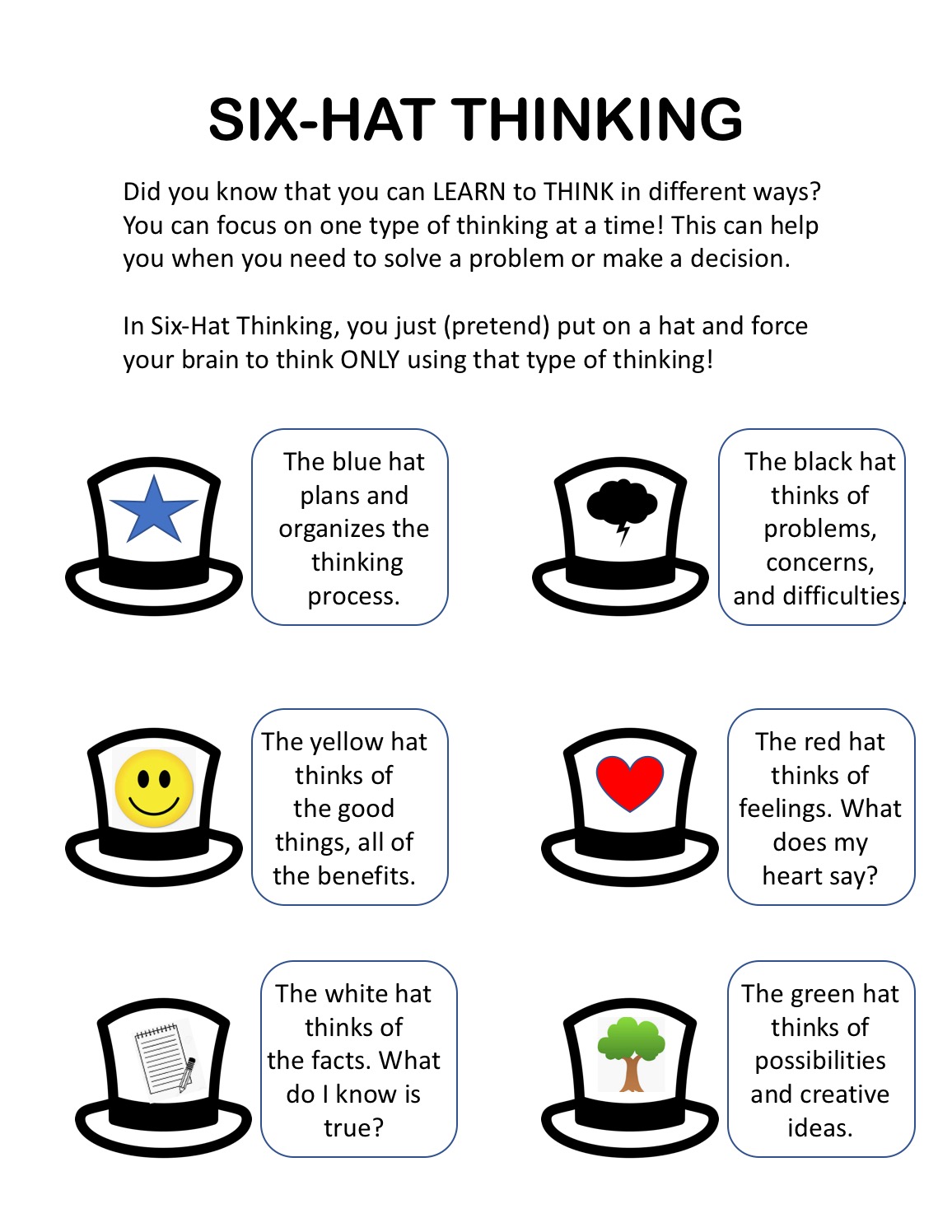
SixHat Thinking Big Ideas for Little Scholars
The Blue Hat (Planning) This is usually the person chairing the meeting or heading up a team. They set the ground rules. A session will most often start and end with this person. Questions that are likely to be asked while wearing this hat: "What is the problem?" "What are the benefits of solving this?" The White Hat (Facts)
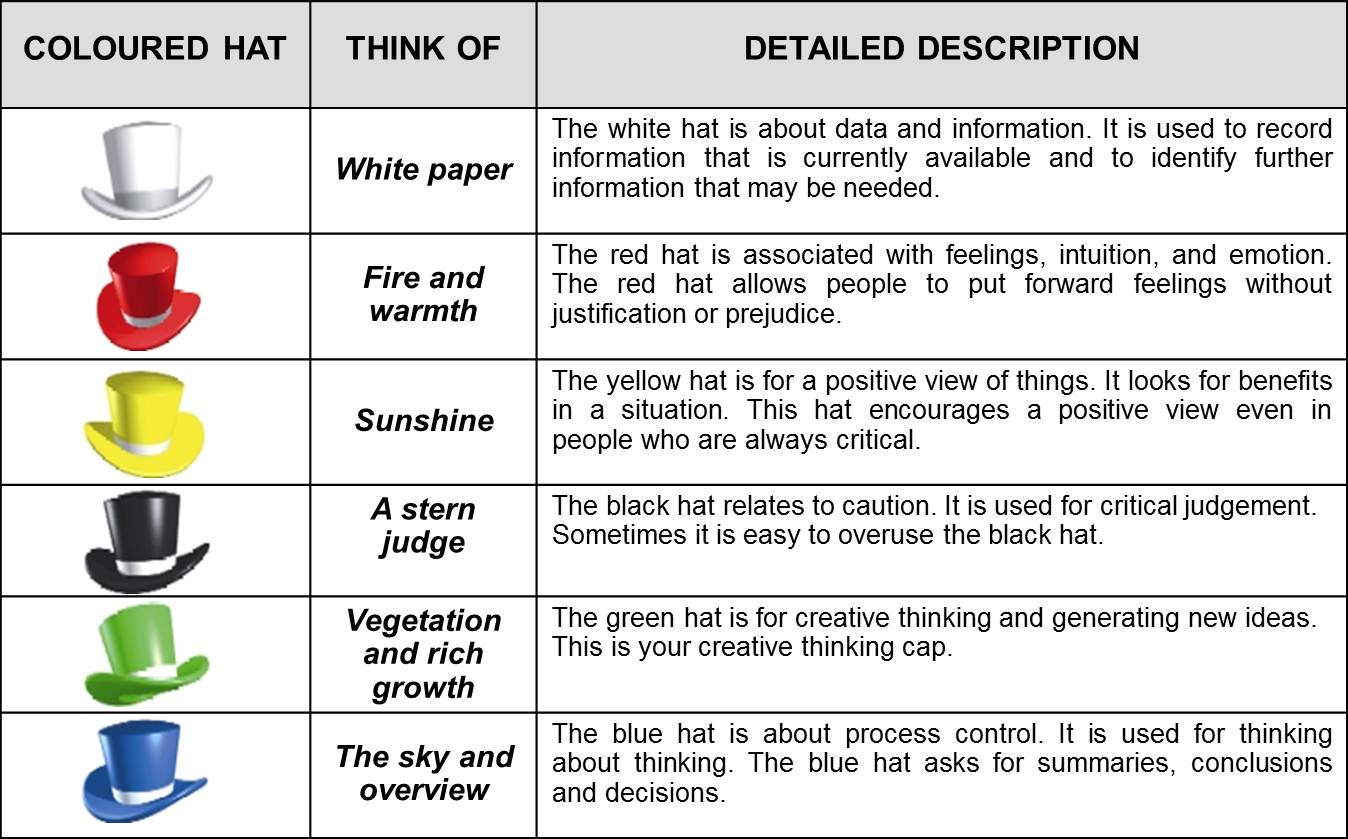
Six Thinking Hats Wear’em!! BMS Bachelor of Management Studies Unofficial Portal
• Holly Davis 1= black (most like me) 2= green 3= red 4= white 5= yellow 6= blue (least like me) Six Thinking Hats Six Thinking Hats is a strategy that teaches students be FLEXIBLE THINKERS. Students learn about six different types of thinking they can apply to any situation, represented by different colored hats. Optimistic Judgmental Creative
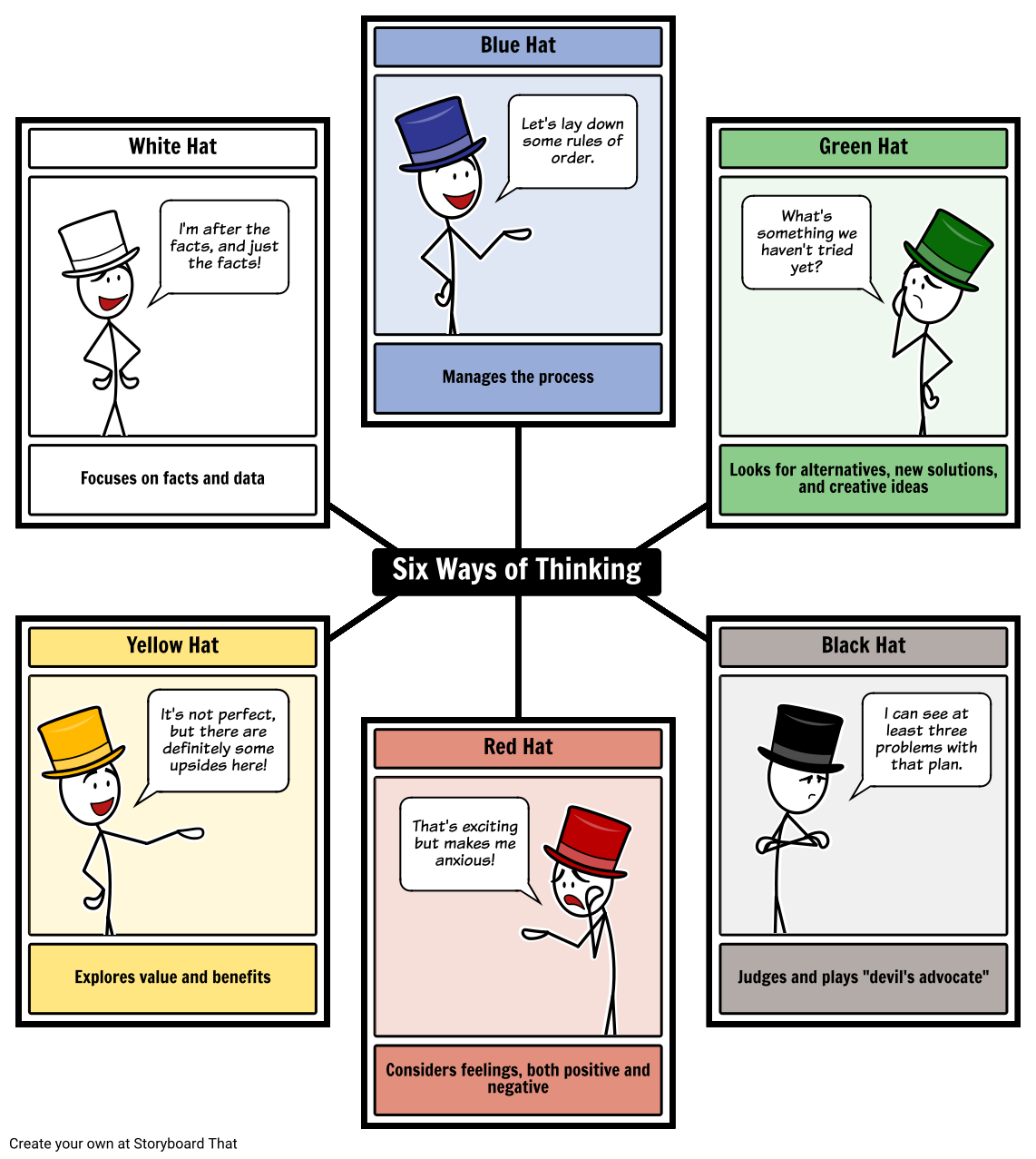
Six Thinking Hats de Bono Brainstorm with 6 Thinking Hats
In episode 216 of the I'm Busy Being Awesome podcast, we're talking about the six thinking hats technique that I think your brain will love. It's one that offers the unique ability to help you: Strengthen your decision making. Streamline your problem solving. Enhance your cognitive flexibility overall. (Yes, please!)
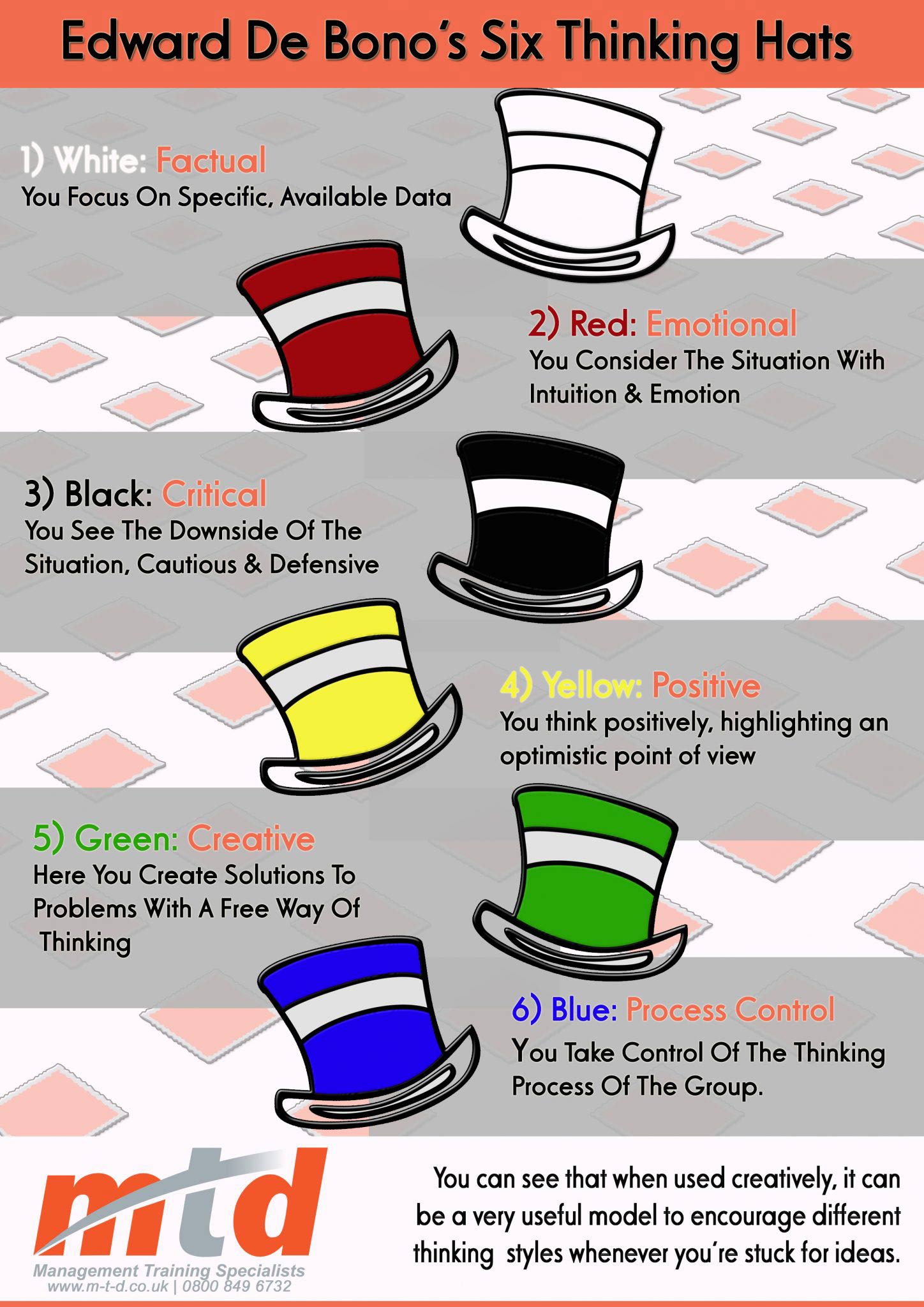
The Six Thinking Hats Infographic
Six Thinking Hat Mindmap; Edit this example. The template above is in the form of a mind map. For those who don't have an idea about what a mind map is, it is a tool that provides information sharing among colleagues. In general, it is highly similar to the concept behind the Six Thinking Hats making it a perfect example. Six Thinking Hats Board
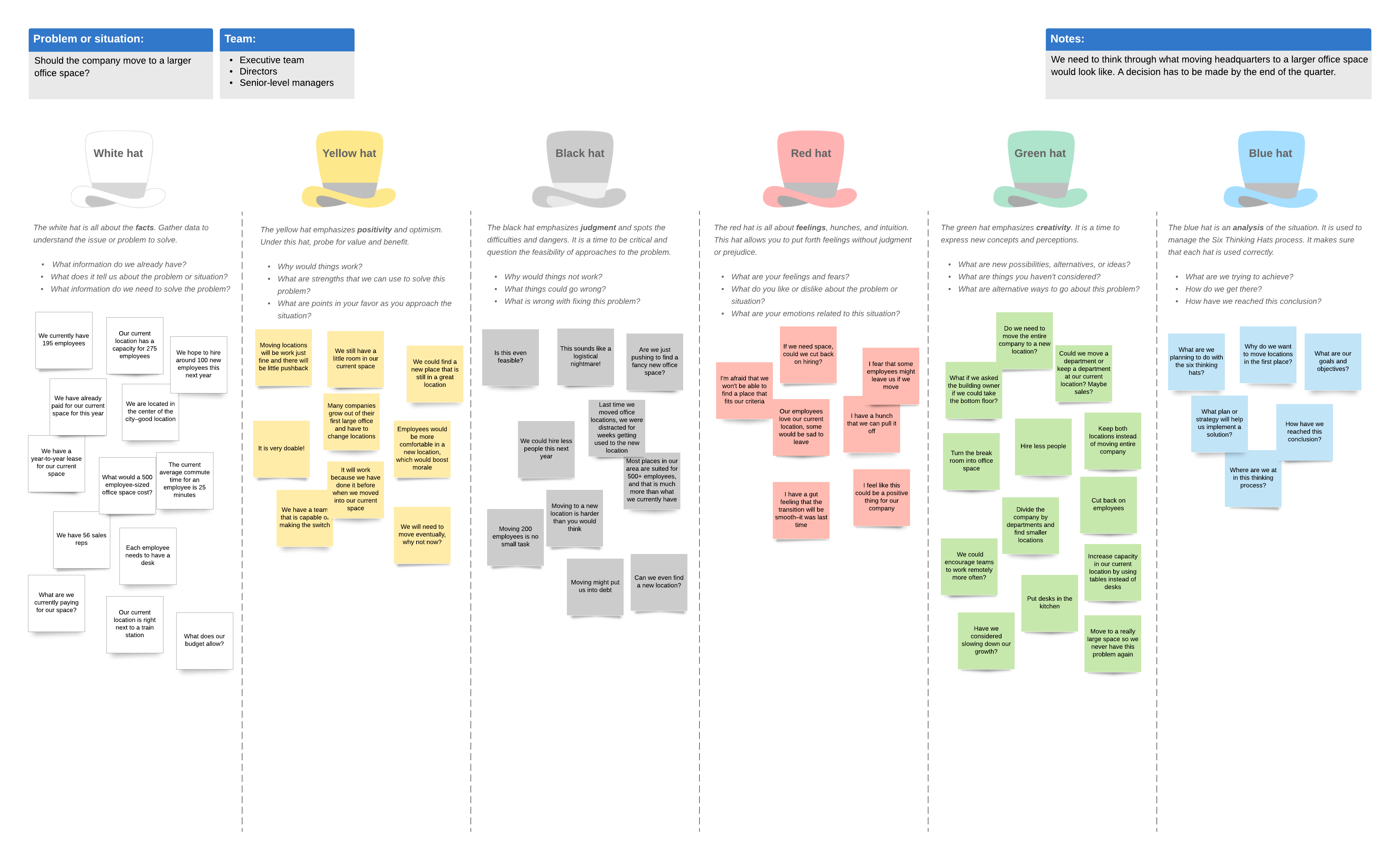
How to Use the Six Thinking Hats Technique Lucidchart Blog
For instance, a meeting may be called to review a particular problem and to develop a solution for the problem. The Six Thinking Hats method could then be used in a sequence to first explore the problem, then develop a set of solutions, and to finally choose a solution through critical examination of the solution set.

Six Thinking Hats Example Six Thinking Hat Template
The Six Thinking Hats is a role-playing model developed by Edward de Bono in 1986. Each hat represents a different lens or perspective on a particular issue and is an insightful activity that prevents narrow thinking. It serves as a team-based problem solving and brainstorming technique that can be used to explore problems through various perspectives in order to uncover options that might.
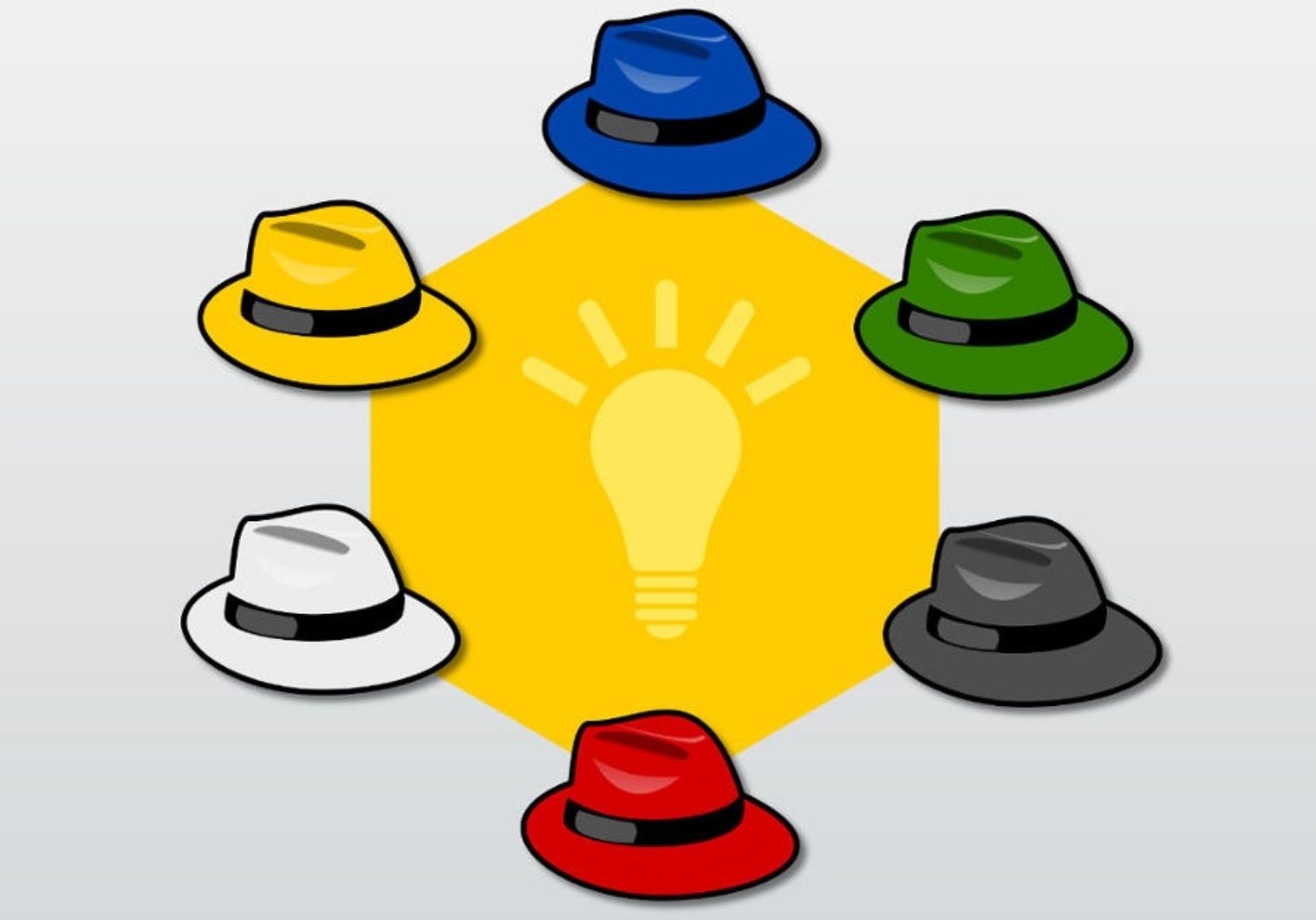
Six Thinking Hats Definition, Benefits & Framework Explained Marketing91
Finding a Job Interviewing Career Development What Are The Six Thinking Hats? (With Benefits And Examples) What Are The Six Thinking Hats? (With Benefits And Examples) Indeed Editorial Team Updated 11 August 2023 Effective decision-making is essential to achieving important objectives and goals.
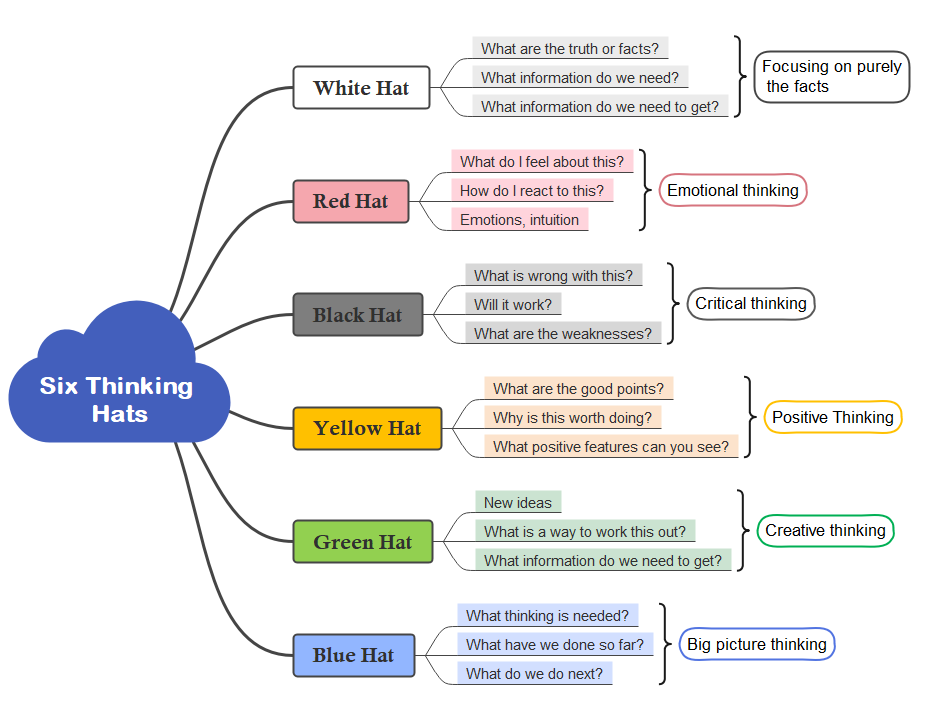
Free Six Thinking Hats Template & Examples EdrawMind
This article contains the meaning of the Six Thinking Hats technique and a practical explanation of all six thinking hats, including examples. You will also learn about different related concepts, such as parallel thinking. The article also contains advantages and disadvantages of this method to extract maximum value and to avoid pitfalls.
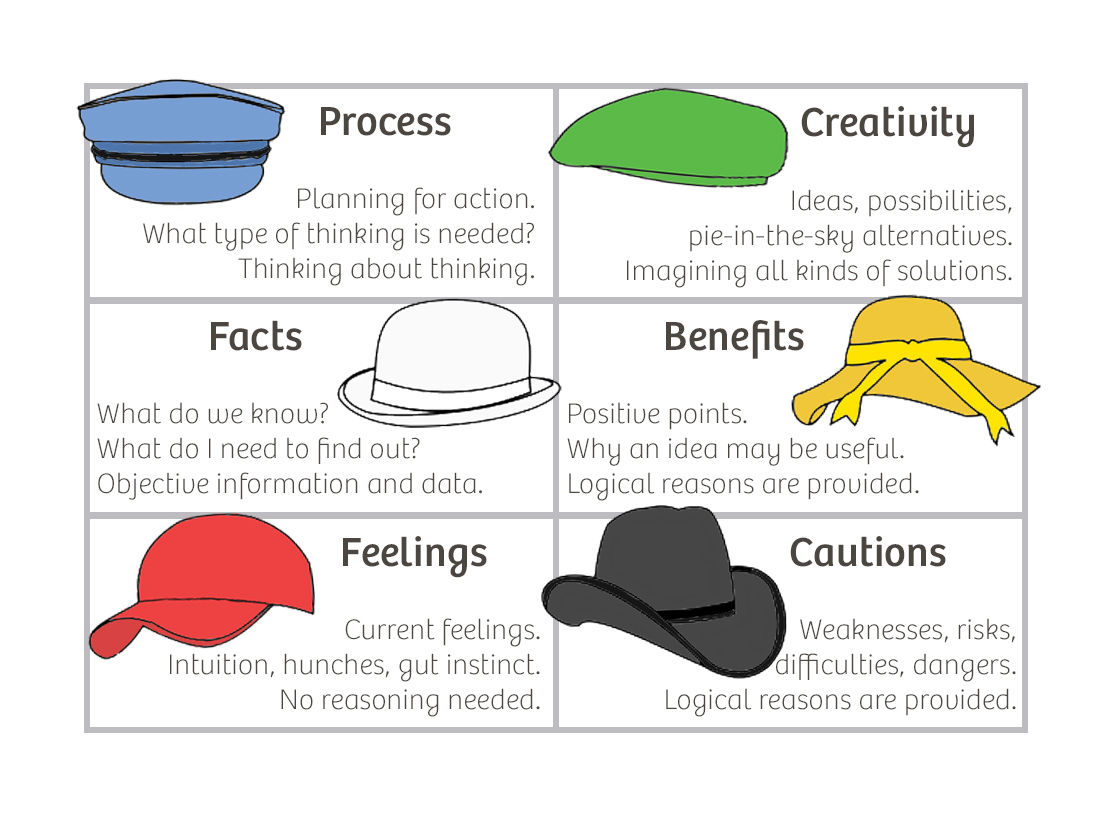
Six Thinking Hats • Agile Coffee
Six Thinking Hats Understanding the Concept of Six Thinking Hats This article discusses what the six thinking hats technique is, its benefits, what each hat represents, and the practical application of this thinking process. Published 15 Sep 2023 What is the Six Thinking Hats Technique?

Six Thinking Hats Untools
Yellow hat: Positive thinking for exploring benefits. Green hat: Creative and innovative ideas. Blue hat: Facilitation and process control. In all, the six thinking hats process provides a framework that improves collaboration, decision-making, and problem-solving by leveraging the power of parallel thinking and tapping into group intellect.

Six Thinking Hats
What are you missing? Red Hat: A red hat thinker strongly integrates emotion into their thinking process. This person will make decisions primarily with his/her gut reaction or intuition. They also tend to be keenly aware how others may react emotionally to a decision. On the other hand, they can struggle to see a problem logically.